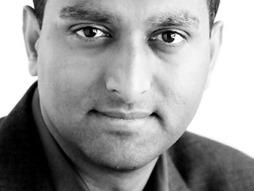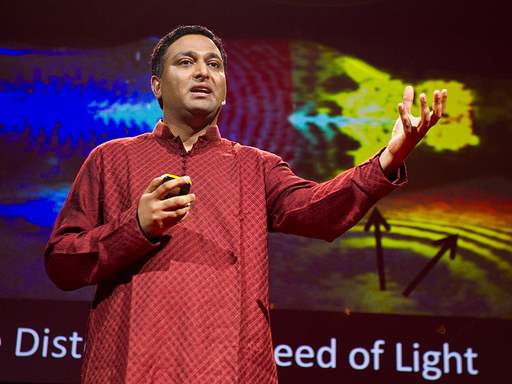Photography is about creating images by recording light. At the MIT media lab, professor Ramesh Raskar and his team members have invented a camera that can photograph light itself as it moves at, well, the speed of light.
Why you should listen
In 1964 MIT professor Harold Edgerton, pioneer of stop-action photography, famously took a photo of a bullet piercing an apple using exposures as short as a few nanoseconds. Inspired by his work, Ramesh Raskar and his team set out to create a camera that could capture not just a bullet (traveling at 850 meters per second) but light itself (nearly 300 million meters per second).
Stop a moment to take that in: photographing light as it moves. For that, they built a camera and software that can visualize pictures as if they are recorded at 1 trillion frames per second. The same photon-imaging technology can also be used to create a camera that can peer "around" corners , by exploiting specific properties of the photons when they bounce off surfaces and objects.
Among the other projects that Raskar is leading, with the MIT Media Lab's Camera Culture research group, are low-cost eye care devices, a next generation CAT-Scan machine and human-computer interaction systems.
Papers:
Andreas Velten, Thomas Willwacher, Otkrist Gupta, Ashok Veeraraghavan, Moungi G. Bawendi and Ramesh Raskar, “Recovering ThreeDimensional Shape around a Corner using Ultra-Fast Time-of-Flight Imaging.” Nature Communications, March 2012
Andreas Velten, Adrian Jarabo, Belen Masia, Di Wu, Christopher Barsi, Everett Lawson, Chinmaya Joshi, Diego Gutierrez, Moungi G. Bawendi and Ramesh Raskar, "Ultra-fast Imaging for Light in Motion" (in progress). http://femtocamera.info
What others say
“Though photographs in the near future will still be composed by people holding cameras, it will gradually become more accurate to say pictures were computed rather than 'taken' or 'captured.'” — Popular Photography magazine

